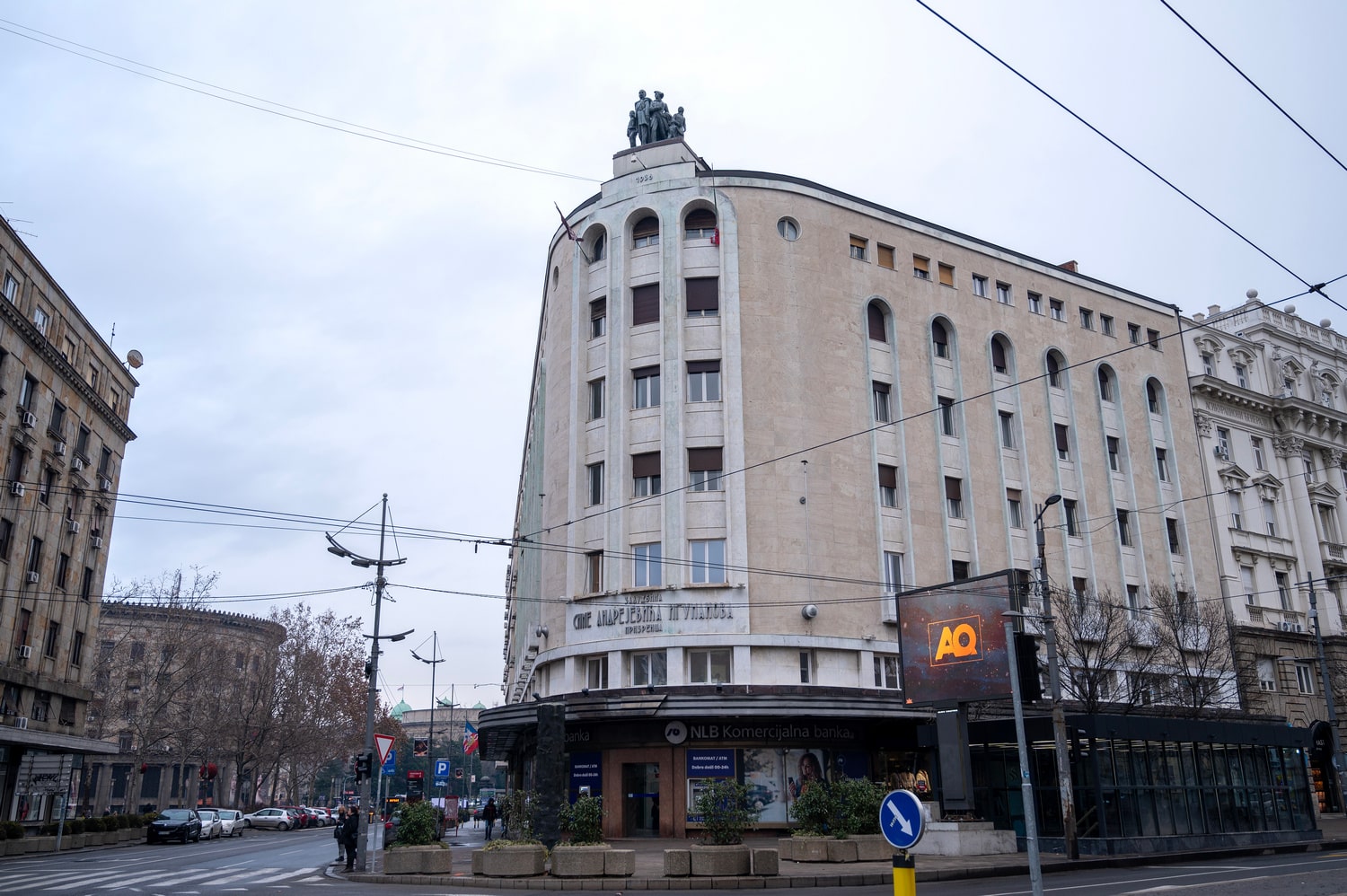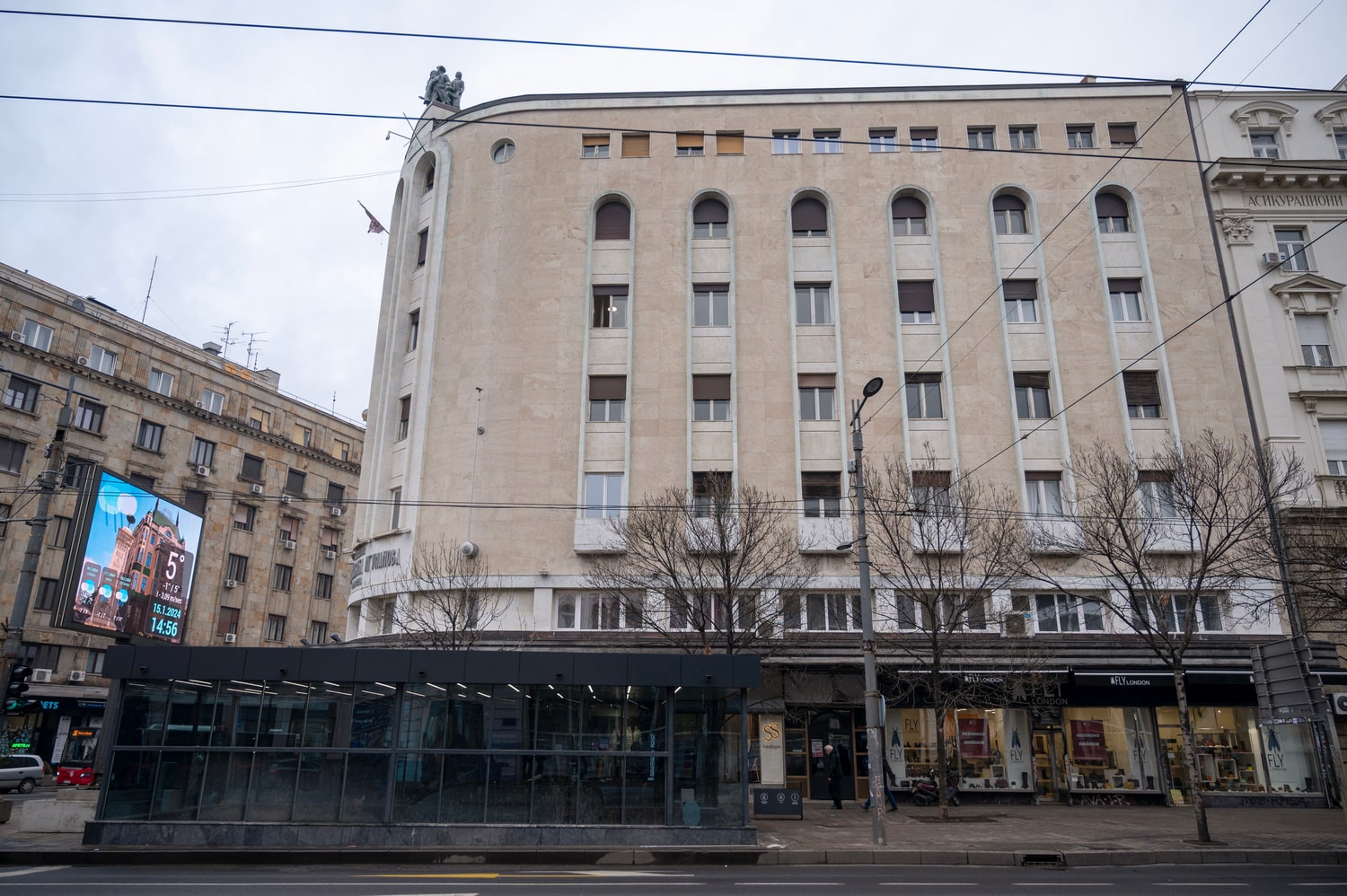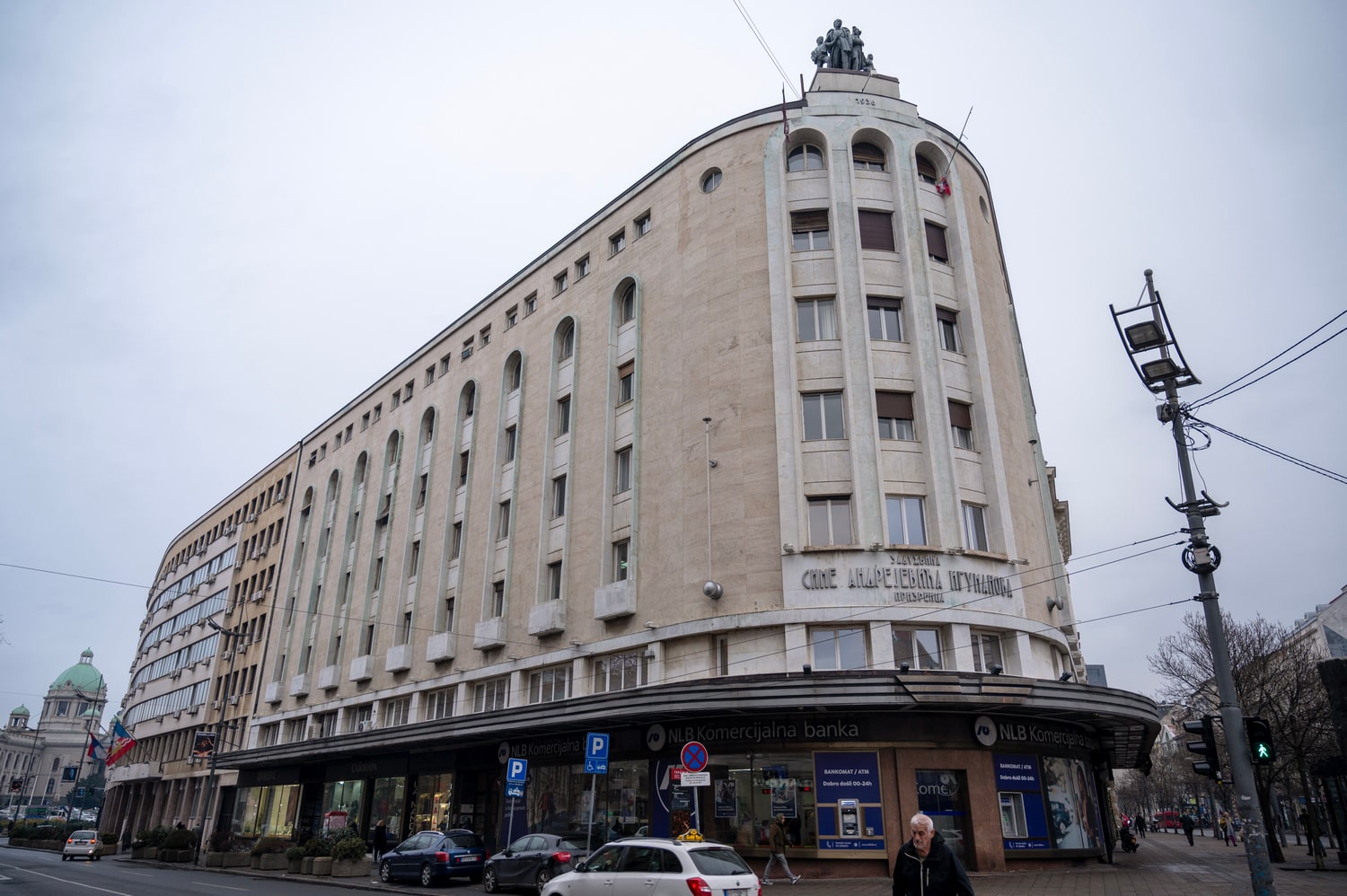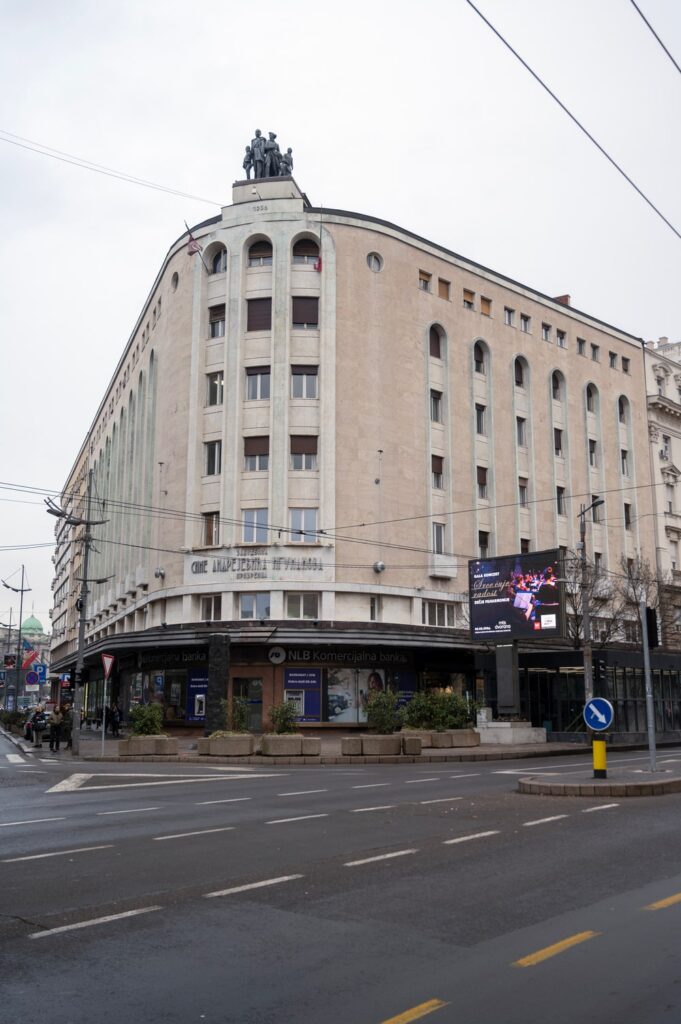Castles of Serbia
The Igumanov Palace
Belgrade
Igumanov Building (Igumanov Palace) is located in Belgrade, in the city municipality of Stari Grad. Built in 1938, it is included in the list of cultural assets of the city of Belgrade.
The Igumanov Palace, located at Terazije 31, was completed in 1938, according to the project of Petar and Branko Krstić; which is characteristic of a modern style with strong elements of Art Deco and Byzantine tradition. On the pediment of the facade is written the text: “Endowment of Sima Andrejević Igumanov, Prizrenian” – namely, Sima Andrejević Igumanov (1804-1883) was a wealthy merchant who opened the Theological School in Prizren in 1872.
The Igumanov Palace comes at a time when the city center is slowly moving from the Velika Pijaca (Grand Market, today Student square) towards Terazije Street, and a new city centre is being formed, between the two wars, on this magnificent boulevard that was so wide that it needed a series of magnificent buildings. Then, in 1935, the Endowment of the merchant Sime Igumanov from Prizren appeared with its competition for the palace project, and it was led by the supporter of the Serbian-Byzantine style, Pera Popović, with the fact that the competition requirement was that the palace must be in that style, and be proportions worthy of a new boulevard. Architect Aleksandar Deroko and architects Branko and Petar Krstić were invited to the competition.
The Igumanov Building is one of the most significant works of the brothers Petar and Branko Krstić and one of the buildings that marks the transition between traditional academic architecture and the concept of modernism. The work of the Krstić brothers, a modernised version of the Serbian-Byzantine style, with wide arcades on the ground floor, was accepted at the competition and in 1936, the main project began. However, during the development of the project, the architects (the Krstić brothers) abandoned the arcades as non-functional elements.




It was conceived as a modern version of the Serbian-Byzantine style, with wide arcades on the ground floor, facades with emphasised verticality and elongated openings that emphasise the façade. This elongated window motif, originally Serbian-Byzantine, is emphasised on the corner of the building that forms the main façade. The modern appearance is due to the marble covering of the facade, a series of rectangular windows and an eaves overlooking the ground floor. This achieves a counterpoint and connection of the old tradition with modernism. Above the building stands a sculpture of Sima Igumanov with orphans, the work of Lojze Dolinar. In 1950, in the broad daylight, a group of people from SKOJ (Union of Communist Youth, the battle fist of the Communist Party) smashed it with hammers. A replica sculpture of the same appearance was returned to the façade again on April 22, 2021.






